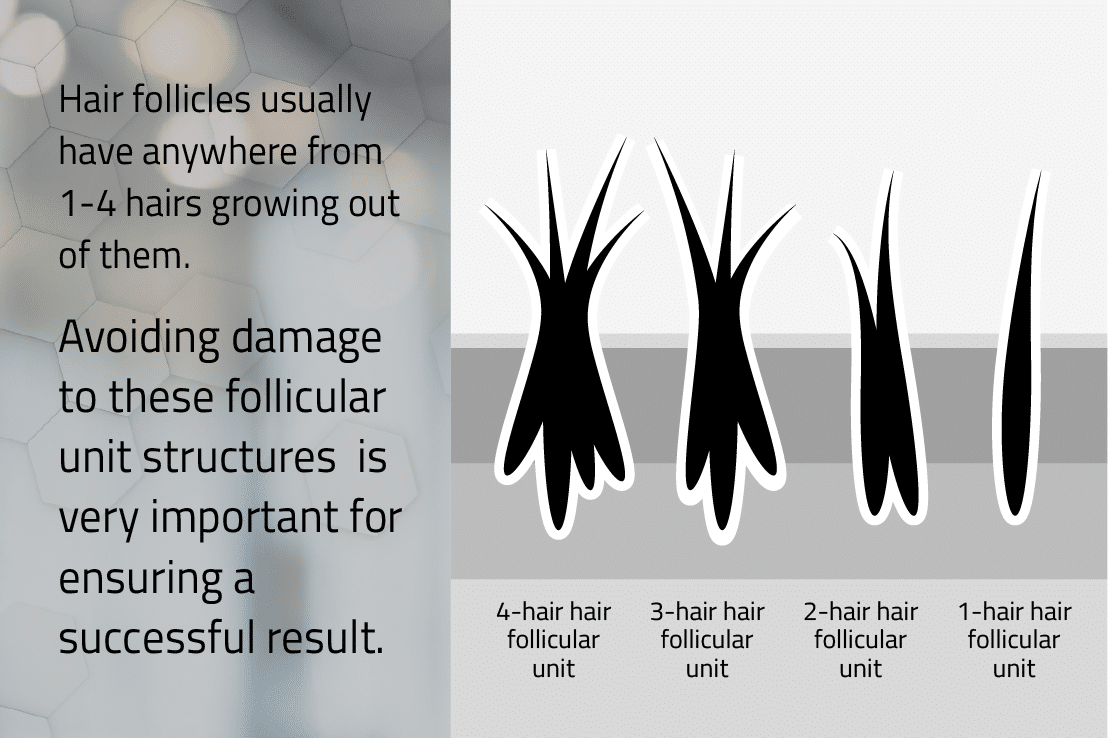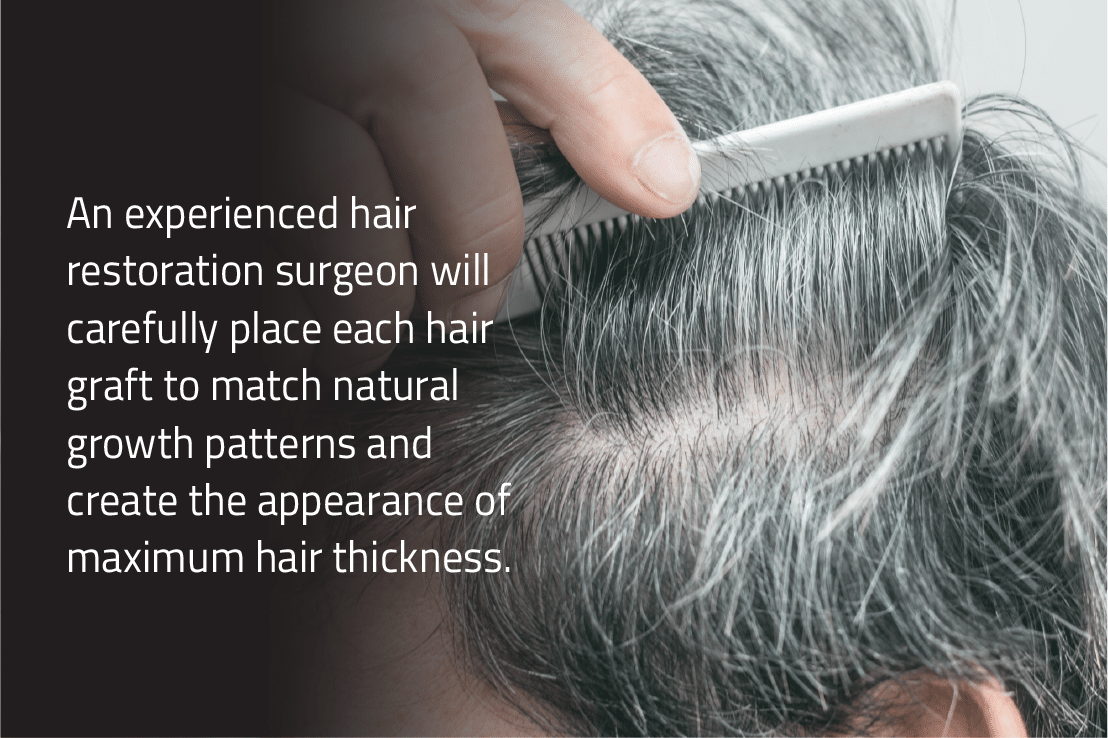Many people have heard about hair transplants — but do you know what actually makes them work?
It’s a good idea to learn a bit about the science behind hair transplantation first if you’re considering having hair restoration surgery.
That way, you’ll understand what goes into a successful hair transplant and be better able to vet potential hair restoration providers for your procedure.
How Hair Grafts Work
Hair grafts work by transplanting hair from areas where hair is still growing to parts of the head that are thinning or bare.
The current gold standard technique for hair transplantation is follicular unit excision (FUE), where follicular units are extracted individually and carefully placed in the new areas of desired growth.
FUE has largely replaced previous hair transplant methods like FUT (follicular unit transplantation, also known as strip transplantation) because it causes less scarring and generally looks better overall.
Also, FUE can also be performed without shaving in many cases—known as Shave-less FUE or No-Shave FUE — to preserve the patient’s appearance.
FUE hair grafts are performed using a small, precise punch to extract individual follicular units from the donor site.
The preferred donor site is usually at the back of the head, as long as there’s sufficient hair density there.
What Are Follicular Units and How Do They Affect Your Hair Transplant?
Follicular units are what we used to call a hair follicle, and despite drawings you may have seen depicting just one hair, they usually have anywhere from 1 – 4 hairs growing out of each one.
In addition to hair, each follicular unit includes nerves and blood vessels as well as the arrectores muscle, sebaceous gland, and perifollicular collagen.
Avoiding damage to these follicular unit structures during the FUE transplantation process is very important for ensuring a successful result.

Factors That Affect FUE Hair Transplant Success
For a successful transplant, the transplanted hairs must take root and thrive in their new location.
Crucial to this success is avoiding transection of the follicular units — this means not damaging the grafts when harvesting or placing them.
While some transection is unavoidable, achieving low transection rates is key to ensuring successful hair transplant results.
Low transection rates/high follicular viability rates also mean you can harvest fewer grafts for the coverage you need, which avoids unnecessarily depleting the donor site.
This paper from the Journal of Cutaneous and Aesthetic Surgery details a few things that go into ensuring the viability of harvested and transplanted follicular units:
- Excision should take place only as deep as level of the arrectores muscle.
- Going deeper into the base risks splaying the hairs and transecting the unit.
- A small punch works best and ensures faster healing with minimal scarring.
- The arrector depth varies in different areas and it varies from person to person, so considerable adaptation is necessary to avoid transection.
What this shows is that achieving high follicular viability takes considerable surgical skill, expertise and precision, so it is important to choose a hair transplant surgeon and team who are highly trained and experienced in FUE.
You will also want to choose a provider who is using the right tools and state-of-the art technology to aid the procedure.
Achieving the Right Hair Density and Natural-Looking Results
Carefully selecting the right follicular units for transplant — and not overharvesting —plays a big role in achieving the desired hair thickness and a natural look.
A good hair restoration surgeon will plan your hair transplant carefully, calculating your current hair density and assessing the amount needed for coverage.
Then, your surgeon will select the right donor sites for your needs and harvest them responsibly to achieve the results you desire.
Because the hair on the back of the head tends to be thicker than that at the front of the head, you can often get great results by harvesting from there.
If the hair on your head is not sufficient for restoring the thickness and density you need for a good restoration, your surgeon may use your beard as a donor site, too (or instead).
Finally, body hair from areas like the chest may also be used, but due to its shorter anagen (growth) phase, it is not usually a primary choice.
Equally important as the planning and harvesting of donor sites is the actual placement of the individual hair grafts.
An experienced hair restoration surgeon will carefully place each one to match natural growth patterns and create the appearance of maximum hair thickness.
All of this should demonstrate why choosing the right hair restoration surgeon is so important to the success of your hair transplant—and to achieving results that last.
When done properly, a hair transplant can restore the natural, more youthful look you desire and sustain it for many years to come.

Ready to Take the Next Step to a Fuller Head of Hair?
We can help! North Atlanta Hair Restoration has helped lots of patients just like you achieve natural-looking results and a thicker, fuller head of hair.
Our lead surgeon, Dr. Daniel A. Danyo, specializes in FUE hair restoration techniques, and he brings an artist’s eye and precision to every hair restoration.
He is supported in every surgery by his highly skilled, veteran surgical team using the latest knowledge, tools, and technology.
Don’t wait to find out how much more confident you can feel with a thicker head of hair. Call us today at 678-845-7521 or click here to book online – we offer both in person and virtual consultations.


